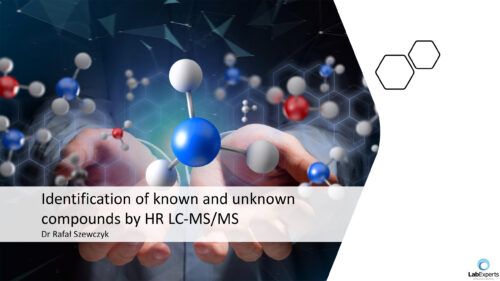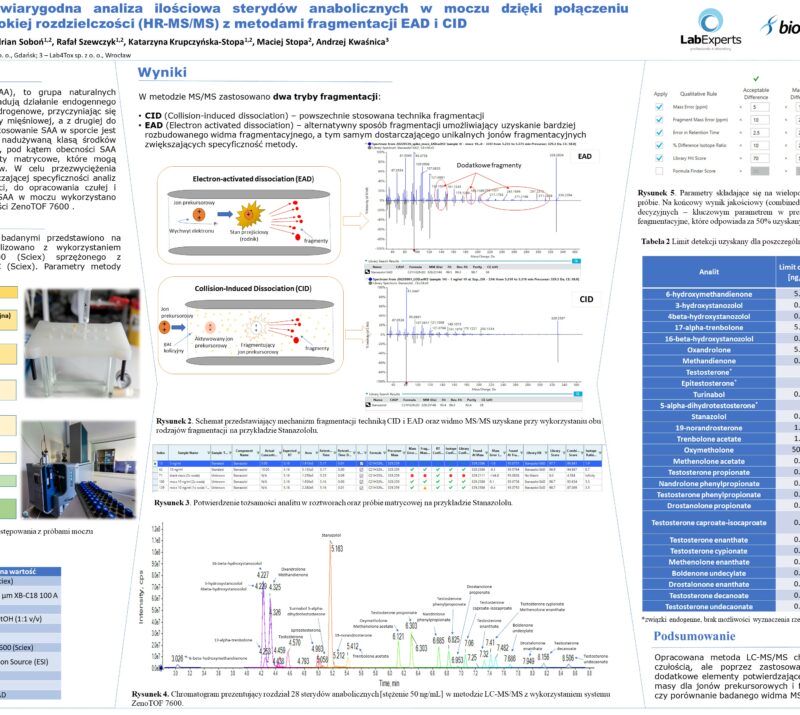Identification of known and unknown compounds by HR LC-MS/MSRafał Szewczyk1 1LabExperts Sp. z o.o., Gdańsk AbstraktCompound identification is one the key aspects of qualitative analysis in targeted and untargeted analytics. High resolution mass spectrometry (HR-MS) has become the major tool for this kind of analysis because of its day-to-day reproducibility, very good mass accuracy, broad linearity and high full scanning speeds achieved in the newest hardware on the market, especially in QTOF instruments. HR-MS data analysis is also strongly supported by software tools. Targeted analysis includes MRMhr or TOF MS scanning while for untargeted analysis data dependent analysis (DDA) or data independent analysis (DIA) are used. With faster scanning and stronger software support DIA slowly becomes a major way for targeted or retrospective quantitation and typical untargeted qualitative analysis. During lecture selected examples of workflows applied to compounds presence confirmation in targeted quantitative analysis and unknown compounds identification will be presented. Examples of targeted analysis include quantitative forensic analysis of anabolic steroids and psychoactive compounds in urine and blood samples with MRMhr multilevel confirmation of compound presence that includes scoring for mass defect of pseudomolecular ion, isotope distribution, target fragment mass defect, mass spectrum database match and retention time. The benefits of novel electron activated dissociation (EAD) gaining steroids selectivity in targeted analysis will be presented. For untargeted analysis and unknowns identification DDA and DIA results and workflows will be presented and discussed with the focus on manual and software supported chemical structure proposal, mass spectrum align and result verification. The selected examples include diclofenac metabolites identification, hydroxyzine contaminants identification and loperamide metabolism during 120h of cell culture. With unparallel selectivity, sensitivity and scan speed novel HR-MS/MS methods gives accurate results in much shorter analytical methods while software tools strongly supports qualitative data analysis. The benefits of EAD – alternative to standard collision induced dissociation (CID) fragmentations opened completely new level of MS/MS data. Still, the knowledge of fragmentation rules and experience is important in unknown compound identification. |




